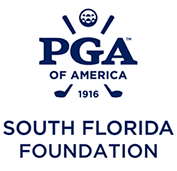Golf Course Marketing Strategies from Golf Management Programs

By Donna White, Keiser University College of Golf Professor, PGA and LPGA Member and Winner of Three LPGA Tour Events
The 2023 American Golf Industry Coalition reports that the macroeconomic impact of the golf industry is over 100 billion dollars and has changed over the years. Like any other business, to achieve long-term financial success, a golf course owner or operator must know industry trends, and the local market and cater to specific target market segments. Effective marketing strategies tailored to the needs and wants of qualified core audiences enable a golf course owner to generate leads and engage customers increasing rounds, revenues, or membership sales.
The Role and Importance of Golf Course Marketing in the Success of a Golf Course
Depending on facility type and location, the demographics of an area influence customer segmentation. Segmentation may be very narrow or quite varied. Golfers may look for a value-based recreation experience versus the services and amenities of a private club. A municipal, public, semi-private, resort, or private golf course should differentiate itself from the competition. Developing a unique selling proposition to propel positive brand awareness and visibility is essential in customer acquisition, retention, and service. Driving revenue and increasing customer reach require a multi-faceted marketing approach.
Components of a Successful Golf Course Marketing Plan
Traditional golf course marketing plans include “outbound” strategies the golf course initiates to reach customers or members. Today, the forefront of golf marketing features “inbound” marketing. Access to the internet and digital tools provide cost-effective and innovative opportunities for customers and members to find and engage with a golf course.
Golf course marketing plans include advertising, promotion, and public relations elements. Advertising initiatives raise awareness and recall of the facility. These might include large ticket items like billboards, radio, or television commercials. For example, aligning with a specific charity event or junior program. Promotion is all about stimulating participation in designated events or activities like a “closest to the pin” or a “demo day” with golf equipment vendors” at the facility. Dedicating public relations dollars to create third-party relationships with entities within the community positions the course in a positive light.
The 4 Ps of marketing: Price, Product, Place, and Promotion
Understanding how to use the four “P” of marketing is essential when developing advertising, public relations, or promotional marketing strategies at a golf course:
- Price: The costs to produce, the value perceived by the golfer, and competitor prices. Establish demand pricing models based on the market and customer experience.
- Product: Customer benefits, features, and influence on customer experience. Do the golf course condition, slope rating, pace of play, facility amenities, and price match your targeted market segment? Influences branding.
- Place: Distribution of marketing content and the customer reach: outbound channels, inbound platforms, the website. Does the content message align with the facility type, mission, and vision?
- Promotion: Strategies and tools to enhance awareness and drive revenue for events at the facility like leagues, member events, and tournaments that require marketing for each event.
When analyzing the golf course facility type, amenities, and services, note the critical questions that need to be answered. Markets include golfers seeking value-based public play, semi-private membership, and low-tier to premium country club golf. What are the wants and needs of the golfers you are marketing and the price they are willing and able to pay? How similar is your facility to your competitors and at what price point might a competitor’s member become yours? The course may be too easy or too difficult. Customer service and amenities might not appeal to the target market. The importance of a unique selling proposition and brand position becomes prevalent when using the 4 Ps of the marketing mix to send the proper message to the perfect customer.
Key Marketing Strategies for Golf Courses
The golf industry has become more competitive in communities where supply and demand are leveling and an increase of more “entertainment” options like TopGolf have evolved. There is a shift in the desire for a more casual than formal customer experience. The National Golf Foundation reports 70% of the golf courses in the U.S. are now public. These factors support opportunities to increase golf course customer bases and grow the game.
Below are key golf course marketing strategies applicable to all golf course facility types:
Branding
Develop a USP (Unique Selling Proposition). What is something the golf course offers that differs from your competitors’? Why would someone select your golf course over another? Differentiate attracting and connecting with golfers using the constant theme in all marketing messages be it a logo, recognizable tag lines, or color schemes
Golf Course Website
The ideal data flow of a website into a customer relationship management system enables operators to respond and generate marketing emails or text messages. The golf course website should allow golfers to navigate and book tee times, register for events, pay, and provide directions, rates, and other pertinent course or member information. Reminder, the site most likely may be viewed on a mobile device or tablet requiring fast loading and proper formatting.
Social Media and Digital Tools
Facebook, Twitter, Instagram, and any other “inbound” marketing platform where golfers can find stimulating content such as videos, blogs, and member testimonials encouraging immediate customer engagement. SEO (search engine optimization) tools like Google Word increase the probability for your golf course website to pop up in a query increasing lead generation and conversion. Available data and analytic digital tools to track website traffic, engagement, conversion rates, and bookings help golf courses monitor the effectiveness of golf marketing strategies and budgets.
Loyalty Programs and Member Incentives
Loyalty and retention matters. Customer retention costs less than customer acquisition. Loyalty programs typically are based on points, rebates, and rewards for customer spending and participation. Member incentives also stimulate referrals leading to a potential increase in the customer base. A reminder, discounting is not a loyalty program. Use loyalty programs to create golf course promoters eager to refer and return.
Leverage Tournaments and Events
Promote your brand, raise awareness of your golf course, and attract new and loyal customers by hosting and conducting outside tournaments, corporate outings, or non-golf events like weddings at your golf course. These types of activities allow those who might not normally play or visit your course and open community networking opportunities with businesses, charities, media, and others.
Customer Experience and Reviews
Golfers are willing to pay a higher rate to play or join a golf course if the value of the customer’s experience exceeds the price paid. Creating consistent and memorable customer service at every customer touch point is essential to a golf course’s reputation and brand image. The simplicity of the tee time reservation process at a public golf course or nurturing the potential new member to join at a private club, a satisfied customer who returns to play or a member who refers another increases the potential for a positive online or word of mouth review.
Golf Course Marketing
The return on investment for all golf course marketing efforts is essential in the development of future campaigns and decision-making. Golf Convergence, Inc. posits most companies in the U.S. budget approximately 5% of their gross revenue to marketing; however, it is not uncommon for golf course operators to spend less than 2% on marketing, suggesting golf courses revisit their marketing practices.
Andrew Wood from Legendary Marketing believes golf course managers do not understand the importance of basic marketing concepts of lead generation, lead conversions, and sales. Outsourcing marketing services to a reputable third-party golf marketing company is a practical option.
Essentially, the customer’s perceived value of the experience rules, not management. How golf course operators promote and deliver customer experience is controllable. Creating a sense of community at any facility to drive revenue and foster loyalty requires clearly defined golf course marketing strategies. Build a reputation as “the course to play” by defining target markets, knowing the course’s market position, using the four P’s of the marketing mix, and creating strategies and goals that align with the facility type and mission.
Interested in a Career in Golf Marketing?
Watch a video on golf careers in marketing and advertising from the College of Golf YouTube channel:
What to Learn More?
If you want to take your game to the next level, contact our team at Keiser University’s College of Golf & Sport Management today. With our dedication and experience, we can elevate your game to new heights together. Give us a call today at 888-355-4465.














